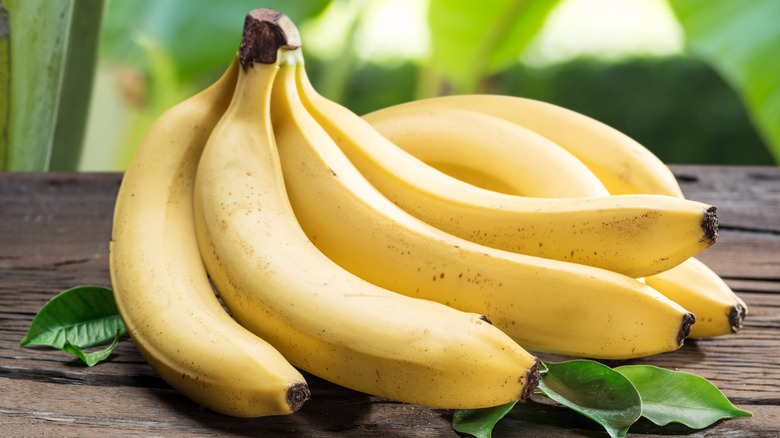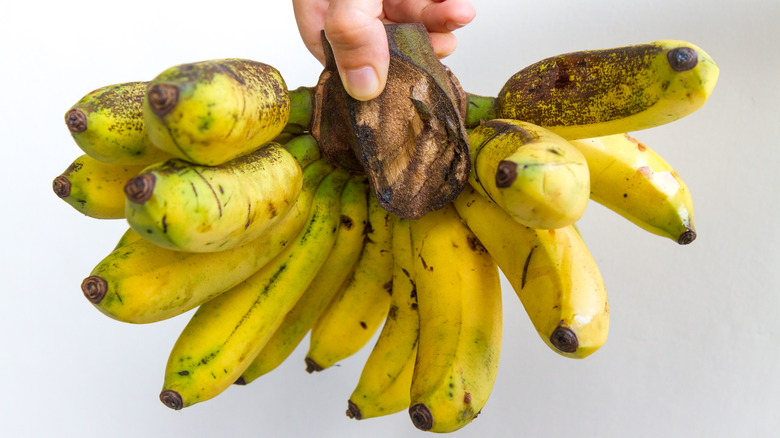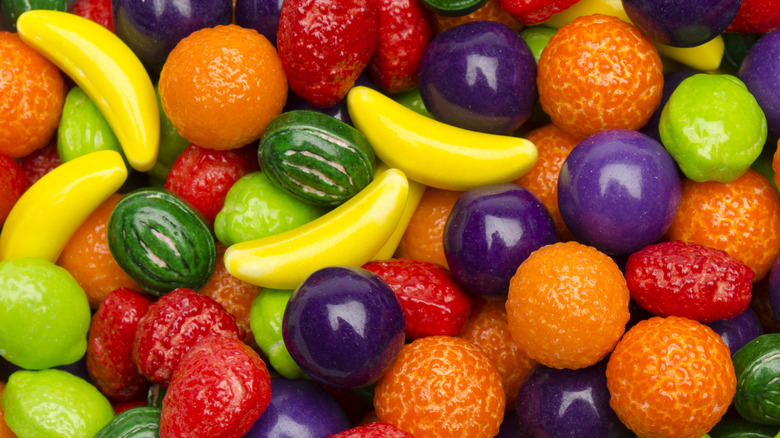Your Great Grandma Wouldn't Recognize Today's Bananas
Bananas are not complicated fruits, or so we think. Unlike apples, which come in loads of different colors and varieties from "red delicious" to "granny smith," we don't often see bananas the same way: They're just bananas. However, there are over 1,000 different kinds of bananas and they've changed a lot, evolving (though selective breeding) from round, green fruits filled with seeds to the bright yellow, phone-shaped fruits we know today. That was far in the past though; there's no way bananas have changed that much recently, have they?
In fact, if you were a child before the 1960s, then you were eating different bananas than the modern, cheap bananas found in Trader Joe's and corner fruit stands today. This is because the "Gros Michel" (French for "Big Mike") variety of banana, which was popular at that time, has been almost completely replaced by the "Cavendish" variety of banana. Where the Gros Michel was thick-skinned and sweet, the Cavendish is larger and more mild in flavor. The differences are subtle, but the now-rare Gros Michel was much more firm and had a stronger taste and smell. They were almost entirely wiped out in the mid-twentieth century.
Gros Michel versus Cavendish bananas
Bananas first originated in Southeast Asia and may be one of the oldest known fruits, but we're not going that far back in time. By the mid-1800s, the Gros Michel had become a popular fruit worldwide, and they were introduced to the United States in the 1870s. Cavendish bananas similarly appeared in the 1800s, but were less popular due to their duller taste. The Cavendish had just one advantage over the Gros Michel: Stronger immunity to the fungal Panama Disease that ravaged the world's supply of Gros Michel bananas during the 1950s. The fusarium oxysporum fungus, which spread through the roots of bananas, spread so quickly and ruthlessly that most sellers gave up on Gros Michels and switched over to Cavendish.
You can still find Gros Michel bananas from sellers, but they're rare and you have to specifically seek them out. In most grocery stores, the selection of bananas with their stems wrapped in plastic are Cavendish. They may not last forever on store shelves: Cavendish bananas began suffering from a new strain of Panama Disease in the 1990s, and a more resilient kind of banana may eventually take its place in supermarkets.
The wide range of banana flavors
It's a common myth that banana-flavored candies taste "wrong" because they're based on Gros Michel bananas, which most people nowadays have never eaten. This isn't true. The flavor for banana candy is made using a chemical compound called isoamyl acetate, which is found in real bananas. However, the first banana candies were made in the United States before real bananas became popular in the country (in the 1860s), and no lab has felt the need to build a better version of the flavor that is already commonly used, so the banana candy taste doesn't match up specifically with any real kind of banana (though the compound used to make it is taken from real, modern bananas or other ripening fruit). It's an entirely unique flavor. Kids who ate Gros Michel bananas generations ago also likely believed that banana candies tasted strange.
Beyond the Cavendish and Gros Michel flavors (and the candies), there are still other kinds of bananas out there too. Plantains are a close relative which you can find just as easily. In Southeast Asian countries like Indonesia, the creamy and slightly orange "pisang raja" banana (which means "King of Bananas") is more popular. Blue Java bananas are tart and slightly bluish when ripe, and red bananas are said to taste like raspberries. You've still got options if you go looking for them.


